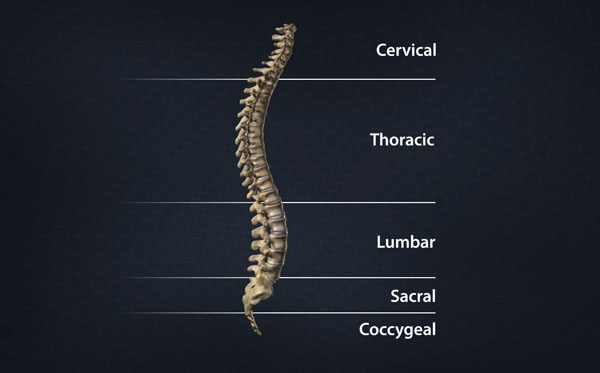...in all the right places! (Part I)
“Doc, I know why I have lower back pain," says the new patient in the exam room. “My general practitioner said I have curvature of the spine.”
Do I look at the patient in disbelief? Or do I assume that they are describing a scoliosis deformity or a congenital spinal problem? Only after a detailed history, examination and x-rays could we really understand what “problem” the patient was actually trying to describe.
When we assess our patients’ spine we make it a priority to look and see which HEALTHY CURVES are in place. That’s right folks, not all curves are bad, especially if they are in the right places.
You see, the human spine must maintain 3 natural curves. One in the neck (cervical), one in the mid-back (thoracic) and one in the low back (lumbar), of varying degrees in order to be considered normal and structurally sound. These normal angles vary anywhere from 40-60 degrees respectively. What is key to note, is these curves MUST ONLY be visualized from the side (sagittal posture) of the patient. There are measured degrees of what is ideal or “perfect
These normal angles vary anywhere from 40-60 degrees respectively. What is key to note, is these curves MUST ONLY be visualized from the side (sagittal posture) of the patient. There are measured degrees of what is ideal or “perfect” and measured degrees of ranges or “common” that help us ascertain normal, but they can only be measured with x-rays of a patient’s spine standing in a resting neutral posture. When someone’s curve angles are not normal, either too high or too low, various mechanical problems occur within the spine. The most common of which is a lack of side view curvature, known as lumbar
When someone’s curve angles are not normal, either too high or too low, various mechanical problems occur within the spine. The most common of which is a lack of side view curvature, known as lumbar hypolordosis, or in other words a drop in the measurement of sagittal or side view angle of the lumbar spine. Lumbar
Lumbar hypolordosis is commonly associated with degenerative disc disease and herniated lumbar disc. The disc problems just mentioned result from increased load or force on the disc over time.
The point? Glad you asked…....When an anatomical structure has a physical load exerted upon it over time, the integrity of the structure can either get stronger OR weaker depending on what the structure is intended to do AND how it is positioned. I know it sounds weird, but it’s much like a decaying road bridge over a river that has a
I know it sounds weird, but it’s much like a decaying road bridge over a river that has a 5-ton limit when a 10-ton truck tries to cross it! Yikes!
In part 2 of this blog series, I will explain how having the normal curves of your spine can prevent decay, long-term pain and spinal failure. See you soon!


